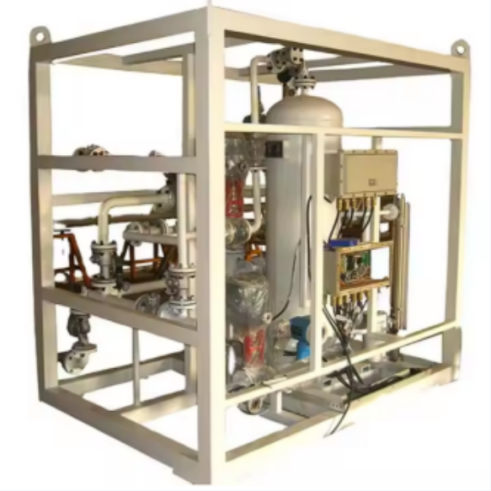To Know More About MPFM
A multi-phase flow meter (MPFM) is an instrument used to simultaneously measure the flow of a three-phase mixture of oil, gas, and water. It is primarily used in oil and gas well production testing, metering, and monitoring scenarios. It measures the flow of each phase directly at the wellhead or in the pipeline without separating the fluids. This is faster, more real-time, and more automated than the traditional "three-phase separator + single-phase flow meter".
Working Principle
Multi-phase flow meters primarily utilize phase characteristic parameters (density, velocity, volume fraction, etc.) of the fluid to infer three-phase flow. Common measurement principles include:
Differential Pressure Measurement
A pressure differential is generated using a Venturi tube, V-cone, or other device, and the mixed flow rate is calculated based on the Bernoulli equation.
Phase Fraction Measurement
Gamma ray attenuation (γ-ray): Measures the volume fraction (GVF, WC) of oil, gas, and water.
Capacitance/Conductance: Measure water content by utilizing differences in dielectric constant or conductivity between different media.
Velocity Measurement
Ultrasonic Doppler/Time-of-Flight Method: Measures mixed flow velocity or phase velocity.
Vortex/Swirl: Suitable for flows with low gas content.
Data Fusion and Algorithms
Parameters such as density, phase fraction, and mixed flow rate are input into the flow model, and an iterative algorithm is used to decompose the flow rates of each phase.
Main Components
Primary Measurement Unit
Venturi/V-cone Flow meter (Differential Pressure Measurement)
Gamma Ray Source and Detector (Phase Fraction Measurement)
Ultrasonic Sensor (Velocity Measurement)
Signal Processing Unit
Data Acquisition and Signal Conditioning
Multi-phase Flow Mathematical Model
Display and Communication Unit
Displays three-phase instantaneous flow and accumulated output
Provides Modbus, 4-20mA, and Ethernet interfaces
Advantages
No separator required: Direct measurement at the wellhead saves equipment and space.
High real-time performance: Continuous online monitoring is possible without test cycle restrictions.
Low interference: Operates under variable flow rates and gas and water content conditions.
Typical Applications
Oilfield production well monitoring: Replaces test separators to obtain real-time oil, gas, and water production.
Offshore platform wellhead metering: Saves space and weight, suitable for offshore oil and gas fields.
Dynamic production capacity analysis: Monitors production trends such as water intrusion and gas cones.
Well test data optimization: Provides a basis for dynamic analysis of oil reservoirs and production regulation.


